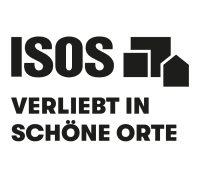Morcote
Hint
Intro
The former fishing village of Morcote is situated on the shore of Lake Lugano and is undoubtedly one of the most frequently photographed places in Ticino. It was not without just cause that picturesque Morcote was voted Switzerland's most beautiful village in 2016.
Morcote at a glance
The overall appearance of Morcote is characterised by its division into two parts: a secular part on the Lake and an ecclesiastical part on the slope. Both parts have their own characteristic buildings.
The bank of the lake is lined with numerous imposing buildings such as Palazzo Paleari, as well as a number of simple buildings. The row of houses by the lake, with their magnificent arcades, is one of the most distinctive features of Morcote and characterises the view of the village from the lake in particular. Just behind these, the winding, cobbled laneways of the village centre unfold. Even today, these still clearly reveal its mediaeval origins.
From here, a spectacular Way of the Cross leads up about 400 steps to the pilgrimage church of Santa Maria del Sasso. A beautiful stream and multiple wayside shrines accompany those making the ascent. Once you arrive at the top, the church sits enthroned like a patroness, presiding over the village. There is also an octagonal chapel and a historic cemetery, in which a number of internationally prominent figures are interred. The pilgrimage church contains frescoes from various eras, a beautiful stone dome and an organ built in 1700 to admire. In addition, visitors can drink in a breathtaking view of the village and the lake from up here.
One rather exotic attraction in Morcote is Scherrer Park, which was created by the St Gallen textile trader, Hermann Arthur Scherrer. The flourishing subtropical vegetation of this park includes palm trees, camellias, cypresses, bamboo and many other fragrant plants. The park is open to the public and attracts visitors not only through its plants, but also through the cultural and artistic events it hosts.
ISOS
ISOS is the Federal Inventory of Swiss Heritage Sites of national importance. The inventory is maintained by the Federal Office of Culture (FOC) and lists the most significant settlements in Switzerland. Today, some 1,200 places are included in the inventory, from hamlets right through to cities. The inventory provides information on the development and identity of the settlements listed in it, thereby contributing to the preservation of architectural diversity in Switzerland and promoting both sustainable planning and a high-quality Baukultur.








